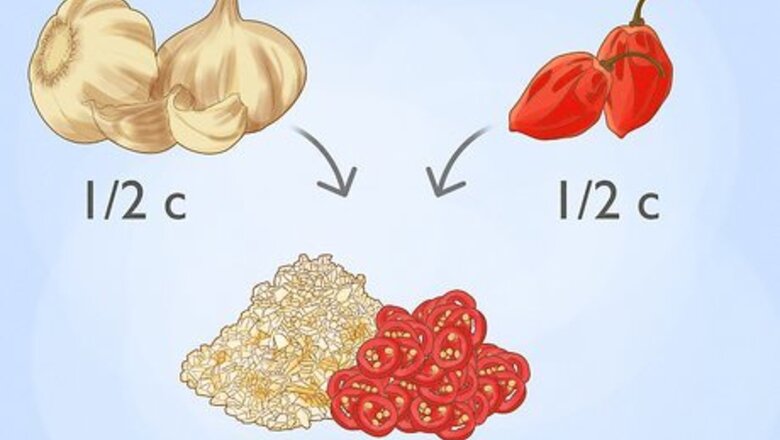
views
Using Vegetables
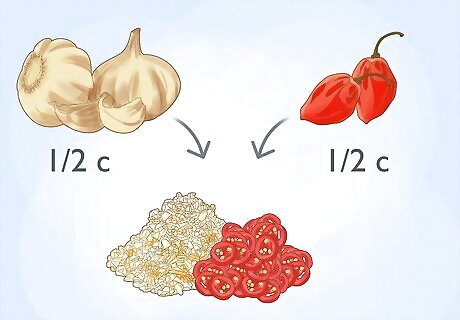
Mix 1/2 c (113 g) of hot peppers with 1/2 c (113 g) of garlic or onion. You can use any hot peppers you like, such as jalapeno and habanero chili peppers. You can also use a combination of onion and garlic instead of one or the other. Chop up all the vegetables thoroughly.
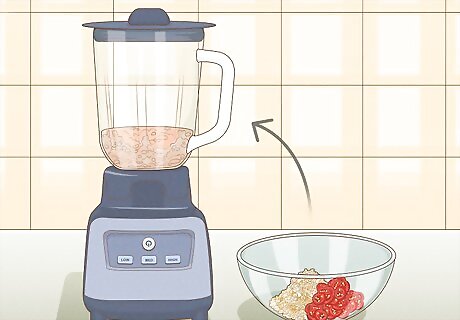
Blend the vegetables together in an electric blender. Transfer the chopped veggies to a blender or food processor. Pulse the mixture until it forms a thick, chunky paste.
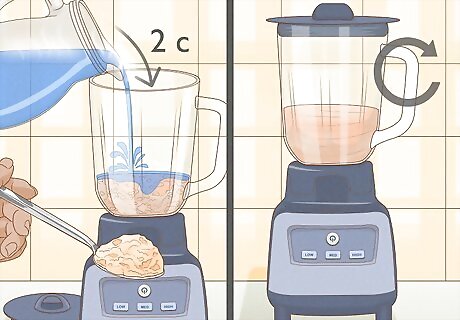
Add the vegetable paste to 2 c (500 mL) of warm water. Measure out the warm water and pour it directly into the blender. Give the ingredients a stir to thoroughly mix them together.
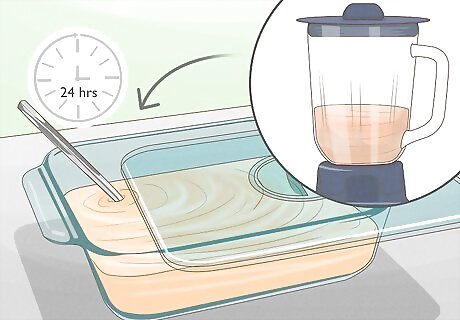
Pour the solution into a glass container and let it sit for 24 hours. You can also use a plastic container, but it will trap an unpleasant odor in the plastic. If possible, keep the container in a sunny location. If not, at least keep the mixture in a warm spot for about 24 hours.
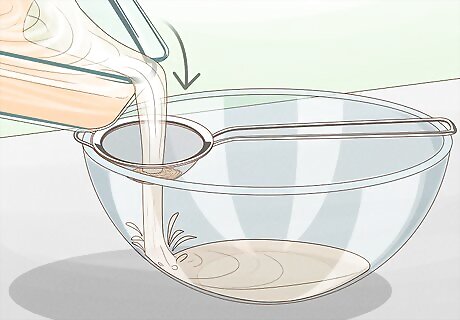
Strain the mixture. Pour the solution through a strainer, removing the vegetables and collecting the vegetable-infused water into another container. This water is your pesticide. You can discard the vegetables or put them in your compost.
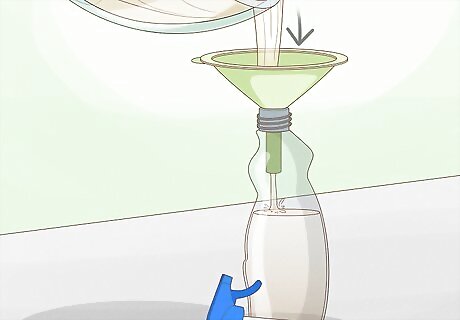
Pour your pesticide into a squirt bottle. Make sure that the spray bottle has first been cleaned with warm water and soap to rid it of any potential contaminants. Use a funnel to transfer the liquid into the squirt bottle and replace the nozzle.
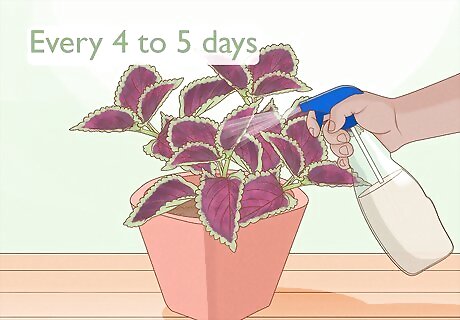
Spray your plants with the pesticide. Treat the infected plants every 4 to 5 days with the solution. After 3 or 4 treatments, the pests should scatter. If the area is thoroughly covered with the solution, this pesticide should keep bugs away for the rest of the season. Avoid spraying the plants during the sunniest parts of the day since it could burn your plants.
Using Oil
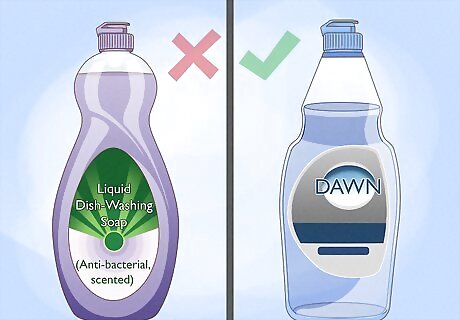
Select a mild liquid dish-washing soap. Avoid anti-bacterial, scented, and other specialized soaps, since these may damage your plants. Dawn and castile soap are both great choices.
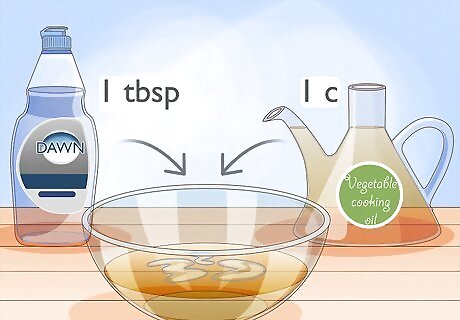
Mix 1 tbsp (15 mL) of mild soap with 1 c (250 mL) cooking oil. Measure out both ingredients and pour them into a large bowl. Use either canola or vegetable cooking oil for best results.
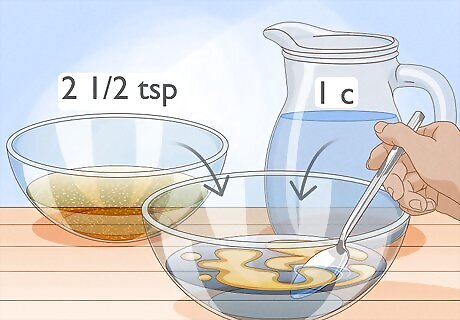
Combine 2 1/2 tsp (12 mL) of the mixture with 1 c (250 mL) of water. Stir the ingredients well to mix them thoroughly.
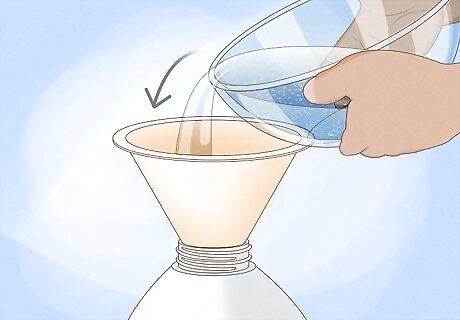
Pour this new mixture into a large squirt bottle. Use a funnel to easily transfer the mixture into the spray bottle. Give the mixture another vigorous shake once you get it inside the bottle.
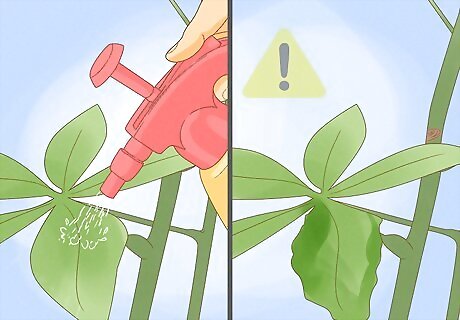
Test the mix by spraying it onto a small portion of your plant. If the section of the plant you test the spray on wilts or changes color, try using a different soap for this pesticide or another type of pesticide.
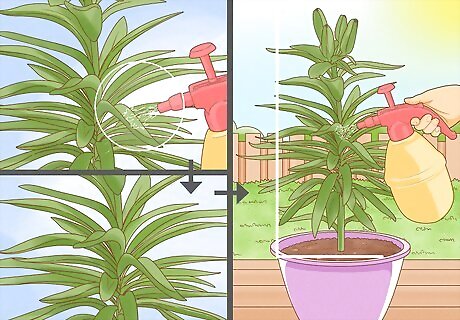
Spray the mixture anywhere you have problems. If you tested your solution and it did not cause any harm to your plant, spray it around your entire plant, including the undersides of leaves. Focus on areas where pests lay their eggs, since an oil spray is designed to target eggs and immature bugs. Use the spray during the early morning or late afternoon, since direct sunlight could burn your plants after using oil.
Using Soap
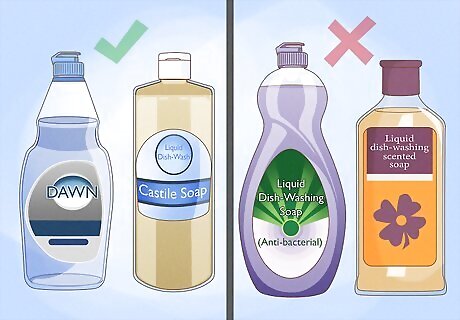
Opt for a mild liquid dish-washing soap. The milder your soap is, the less likely it is to have a harmful effect on your plants. Stay away from anti-bacterial, scented, and other specialized soaps. Mild soaps like Dawn and castile soap work perfectly.
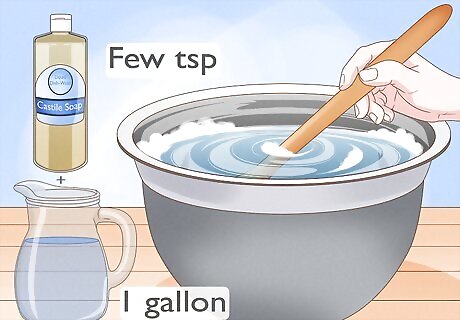
Mix a few tsp (10 to 15 mL) of soap into 1 gallon (4 L) of water. Combine the soap and water in a large bowl. Use your hands or a large spoon to mix the ingredients together.
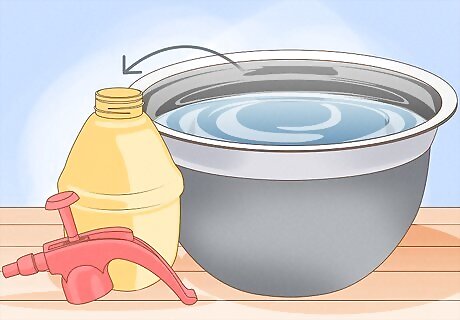
Pour the solution into a large squirt bottle. Use a funnel to transfer the liquid and then replace the nozzle. You may not be able to fit all of the solution into a bottle! Just use the largest bottle you can find to make use of as much of the solution as possible.
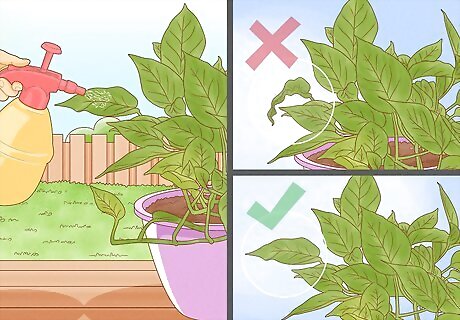
Test the mixture on your plants. Spray a small section of the infested plant with the solution and monitor it throughout the course of a day. If it does not wilt or change color, the solution is likely safe.
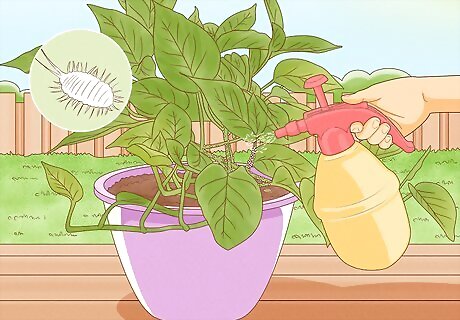
Spray the pests directly with the mixture. Cover the top and undersides of leaves, focusing on the areas that seem the most overcome with pests. The spray works by removing the protective wax on the insect, which causes it to lose a fatal amount of water.

Continue to spray your plants every 2-3 days for the next 2 weeks. Since this pesticide is fairly diluted, continued application is the only way to ensure that the infestation ends.
Using Tobacco
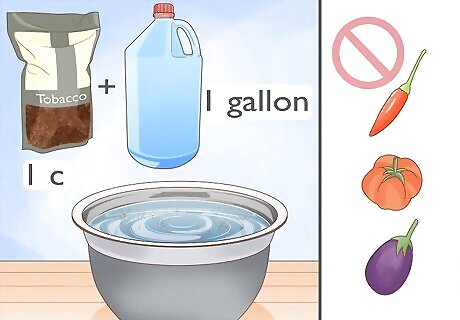
Mix 1 c (250 mL) of loose tobacco into 1 gallon (4 L) of water. Combine the 2 ingredients thoroughly in a large bowl or container. Tobacco is useful in targeting caterpillars, aphids, and worms, but it is not safe to use on peppers, tomatoes, eggplants, or any member of the solanaceous plant family.
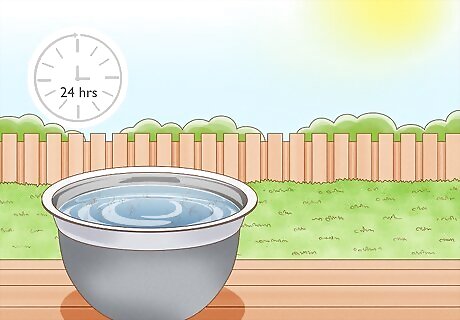
Sit the mixture out in the sun or in another warm location. Put the container somewhere it won't be disturbed. Allow the mixture to rest for 24 hours.
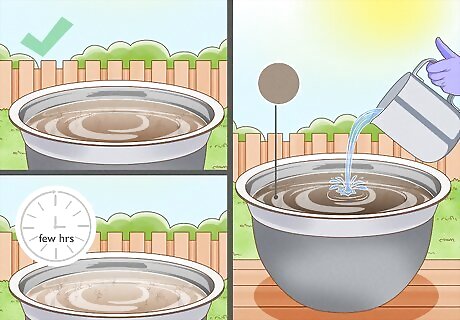
Check the color of the mixture. Ideally, the pesticide will look similar to the hue of a light tea. If it is too dark, dilute it with water. If it is too light to see, allow it to sit an additional few hours.
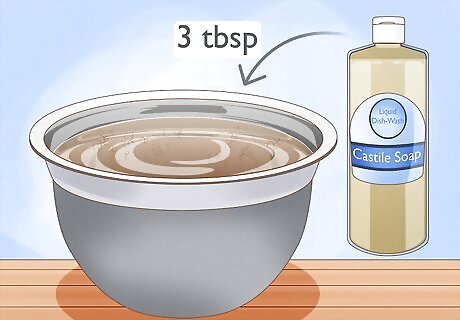
Add 3 tbsp (45 mL) of mild liquid dish soap to the solution. Opt for a mild soap like Dawn or castile soap for best results. Pour it directly into the mixture, then stir thoroughly to combine the ingredients.
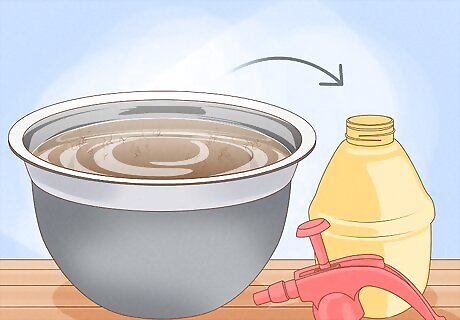
Pour the mixture into a large squirt bottle. Use a funnel to transfer to liquid into a squirt bottle and replace the nozzle. Shake the solution inside the bottle once more to combine it further.
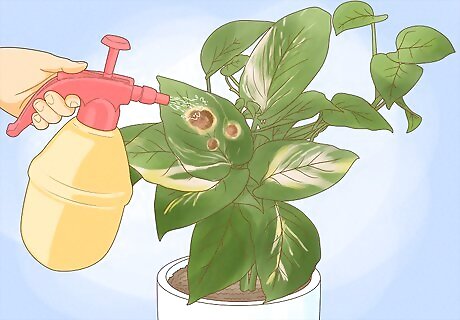
Spray the infested plants with the solution. Focus on areas that show the most damage, but also cover spots that still seem in good condition.
Using Oranges
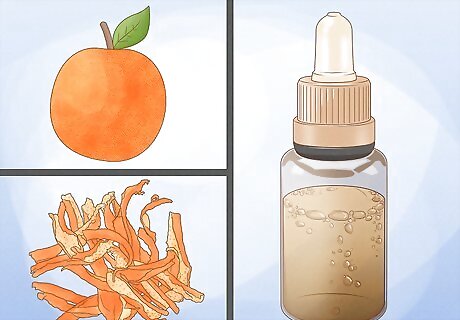
Peel an orange and reserve the rind. Citrus is especially helpful in targeting soft-bodied bugs, including slugs, aphids, fungus gnats, and mealy bugs. When sprayed directly onto the pests, this pesticide also works against ants and roaches. If you do not have a fresh orange, use 1.5 tsp (7.4 g) of dried citrus peels or 1/2 oz (15 mL) of orange oil.
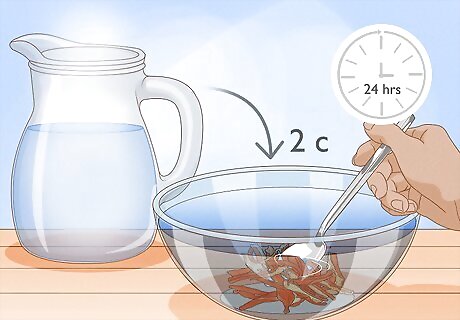
Put the peels in a glass container and add 2 c (500 mL) of boiling water. Fill a kettle with 2 c (500 mL) of water and bring it to a boil. Pour the boiling water into the glass container and allow the solution to sit in a warm spot for about 24 hours.
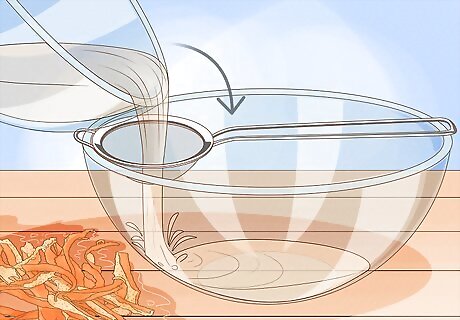
Strain the solution and save the citrus-infused water. Pour the mixture into a strainer, removing the peels and saving the water. You can then discard the peels or put them in your compost.
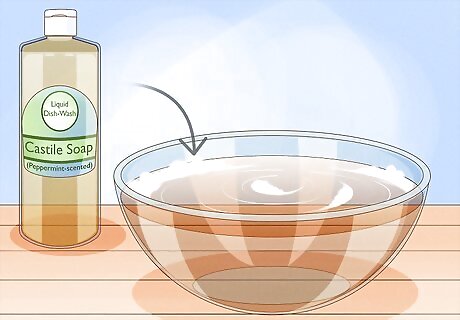
Add a few drops of castile soap to the water. Peppermint-scented castile soap, such as Dr. Bronner's, may prove especially effective. Mix the solution thoroughly to combine the ingredients.
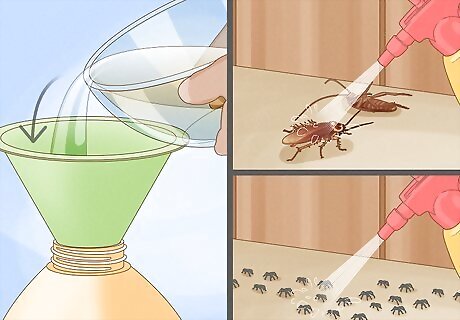
Pour the pesticide into a large squirt bottle. Use a funnel to transfer the liquid into the bottle and replace the nozzle. Spray the entire plant with the solution to ward off most soft-bodied pests. Spray it directly on top of ants and roaches.
Using Chrysanthemums
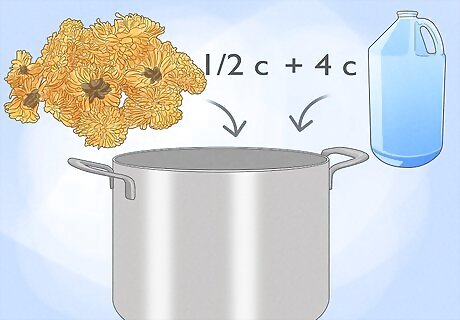
Combine 1/2 c (113 g) of dried chrysanthemums with 4 c (1 L) of water. Chrysanthemums contain a chemical component called pyrethrum, which is capable of paralyzing many garden insects. Mix the dried petals and water together in a large stockpot.
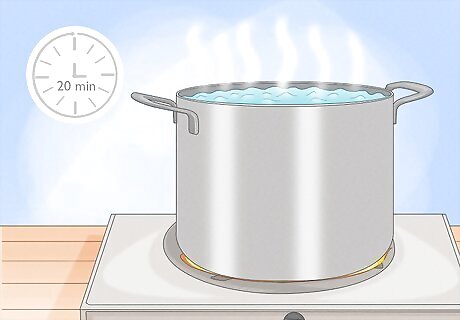
Boil the mixture for 20 minutes. Place the stockpot on your stove over high heat bring it to a boil. Boiling the mixture releases the pyrethrum into the water. Turn off the heat after 20 minutes.
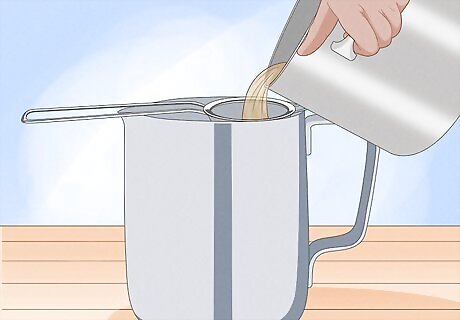
Pour the solution through a strainer. Remove the dried flowers and save the infused water. You can discard the dried flowers or place them in your compost.
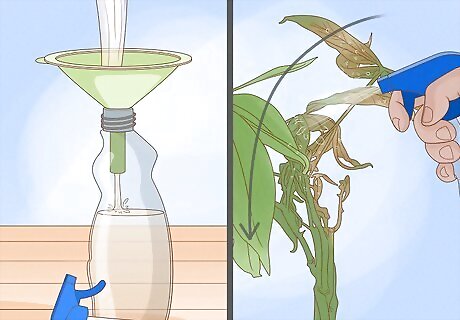
Pour the pesticide solution into a spray bottle and treat plants. Use a funnel to transfer the liquid to the bottle. Focus on spraying the most damaged areas before moving on to less damaged areas. Cover the entire plant with solution, including the undersides of leaves.
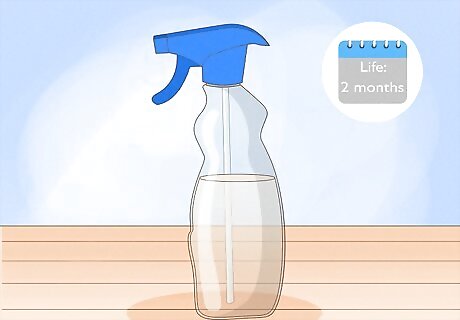
Store the solution for up to 2 months. Keep the solution in a cool, dark place, like your cupboard. After 2 months, the solution may no longer be effective, so it's best to throw it out and make a new batch.
Using Neem
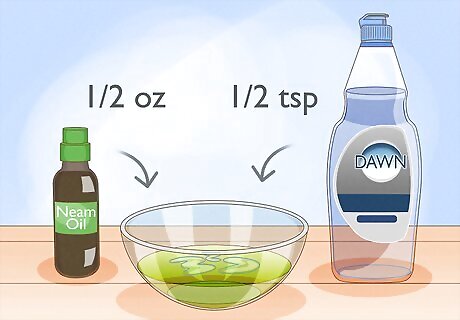
Combine 1/2 oz (15 mL) of neem oil with 1/2 tsp (2 1/2 mL) mild soap. Mix the 2 ingredients together in a bowl. You can get neem oil in most grocery and health food stores, as well as online. Use a mild soap like Dawn or castile soap for the best results. Neem oil, which comes from a bitter tree leaf, is thought to be one of the most effective natural pesticides in existence.
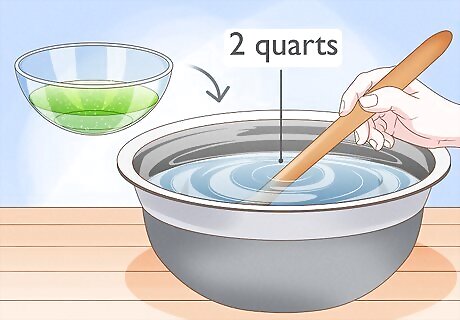
Mix the neem and soap into 2 quarts (2 L) of warm water. Fill a large container with the water, then add the oil and soap mixture to it. Stir slowly until the ingredients are thoroughly mixed together.
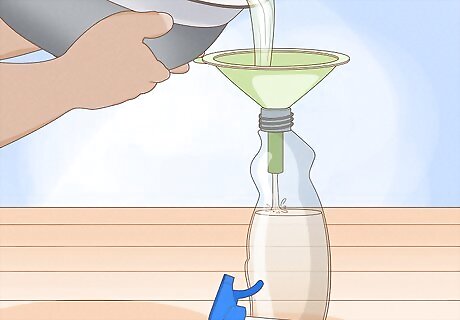
Pour the pesticide into a spray bottle. Transfer the solution to a spray bottle with a funnel. Spray the pesticide immediately, dousing the entire plant and focusing on spots where you can clearly see pests or signs of pests. Re-apply the pesticide regularly to prevent any infestation.




















Comments
0 comment